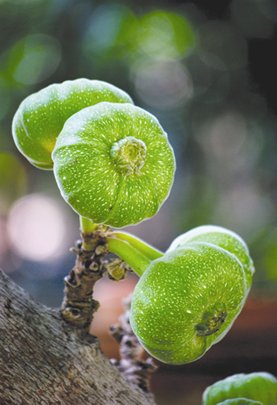
V is a tree of the genus Ficus and is widely grown in Quang Tri, Thua Thien-Hue, Phu Yen and Khanh Hoa provinces for its edible multiple fruit. In Vietnam, the fruit is often consumed fresh as greens, or prepared into many delicious dishes.
Nutritional properties of v, a specialty fruit of the central region

V is a tree of the genus Ficus and is widely grown in Quang Tri, Thua Thien-Hue, Phu Yen and Khanh Hoa provinces for its edible multiple fruit. In Vietnam, the fruit is often consumed fresh as greens, or prepared into many delicious dishes.
One of the tasty dishes is v boiled, sliced and fried with shrimp, pork, sesame and aromatic herbs to be served with grilled rice pancake, which visitors should try at least once when they visit the ancient capital of Hue, especially at garden restaurants in Kim Long, near the famous Thien Mu Pagoda.
The fruit is often simmered with pig legs as a nutritious soup. The soup is very good for nursing mothers. As v bears fruits in the dry season, the fruit is also pickled to be used in the rainy season.
Studies show that v fruit has abundant dietary fiber, protein, fat, sugar, vitamin A, vitamin B complex, vitamin C, and minerals such as calcium, copper, iron, magnesium, manganese, phosphorus, potassium and zinc. The fruit also contains flavonoids, polyphenols and pectin.
Intake of v is very good for health. It can help prevent acne and boils, heal external wounds and delay skin degeneration, thus remaining the youth of the skin. To treat acne or pimple, crush a fresh fruit and apply the stuff onto the face for 10 to 15 minutes a day.
The fruit is rich in dietary fiber, which can help prevent constipation, especially for the elderly. With a high content of dietary fiber but low calories, the fruit is recommended for those who are on a diet to lose extra weight.
The pectin, a water-soluble colloidal carbohydrate, in the fruit can help improve the digestive system and discharge a large number of cholesterol for the body.
The fruit’s omega 3 and omega 6 fatty acids can help lower the risk of cardiovascular diseases. Its high concentration of potassium but low sodium can help lower high blood pressure. The potassium can also regulate the blood sugar.
Intake of v is believed to help relieve pharyngitis and sore throat. The iron in the fruit is very good for the treatment of anemia. Intake of the fruit is also recommended to prevent fatigue and boost the functioning of the brain.
The high content of calcium in the fruit is good for the health of bone as well as the skeleton. Regular intake of v can therefore help prevent the risk of osteoporosis, particularly for old women.
The fruit’s high concentration of flavonoids, which are polyphenolic compounds, has been proven to protect cells and prevent certain cancer, especially breast cancer in women in their menopause.
In traditional Vietnamese medicine, v has long been used to increase sexual desire. The fruits are soaked in fresh milk overnight to be consumed in the next morning (unluckily, there is no detail about the duration of such a remedy).
(Source: SGT)



